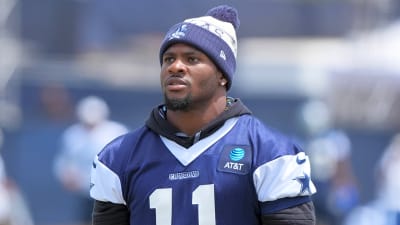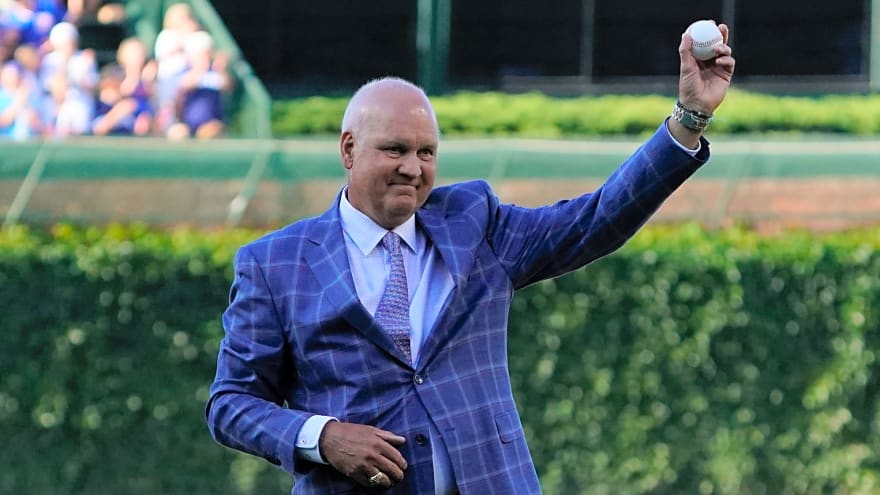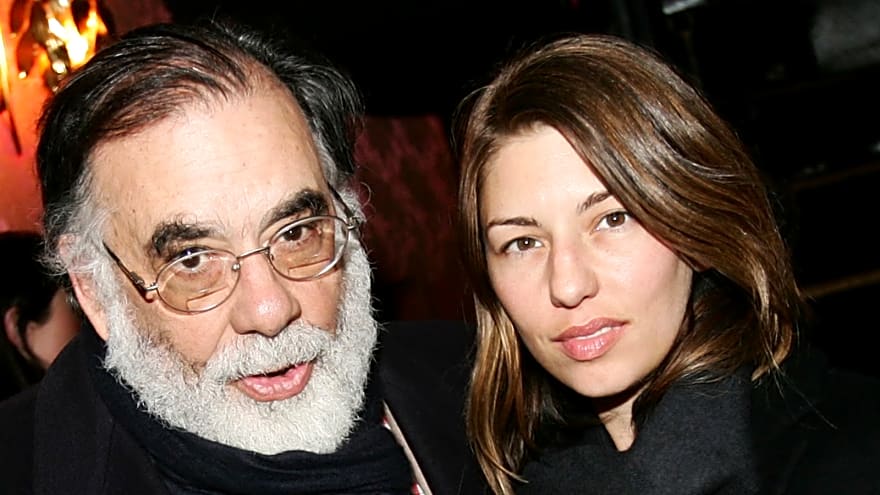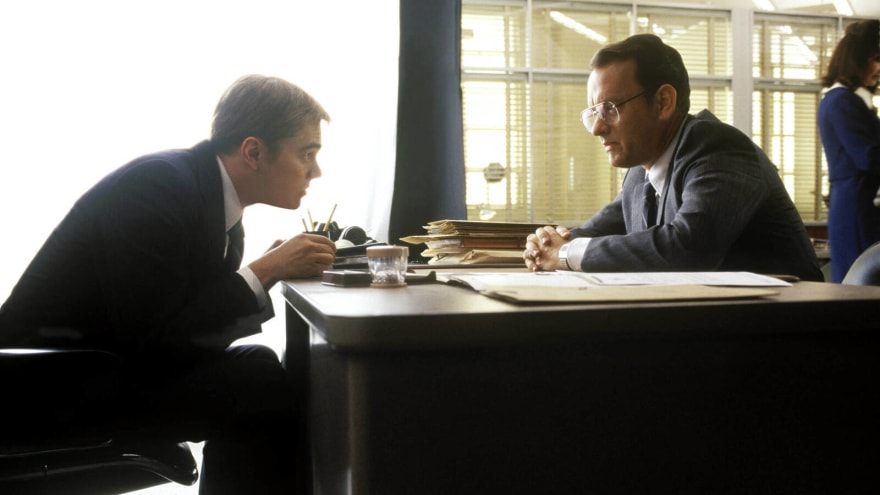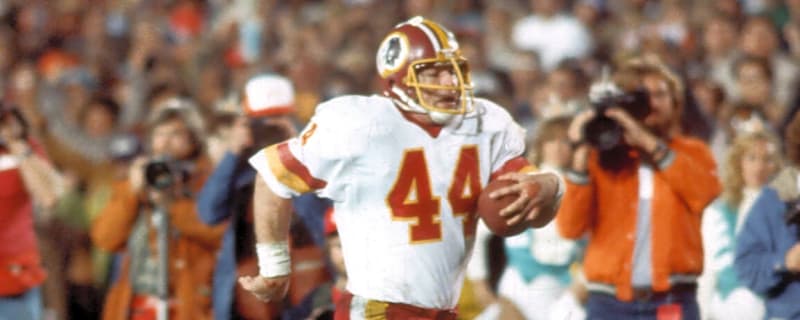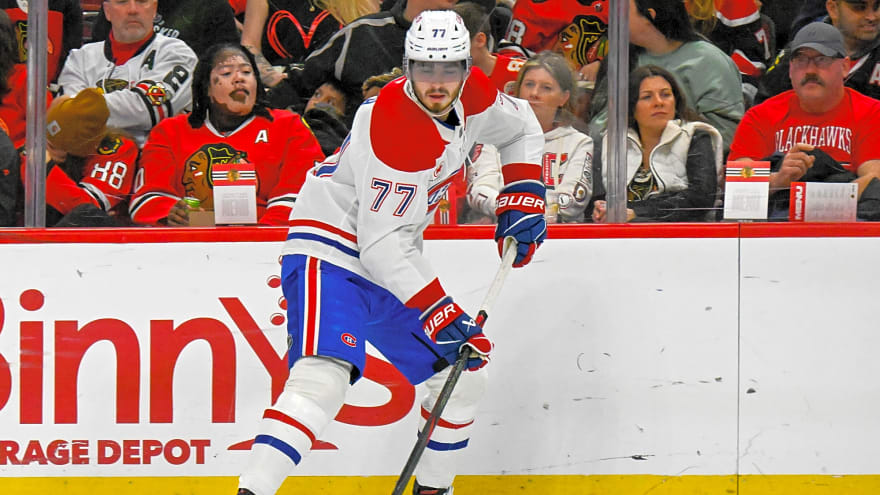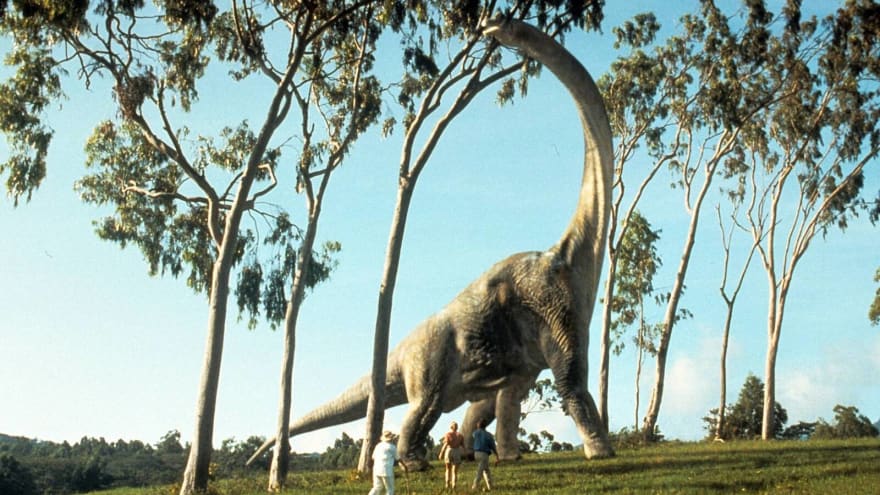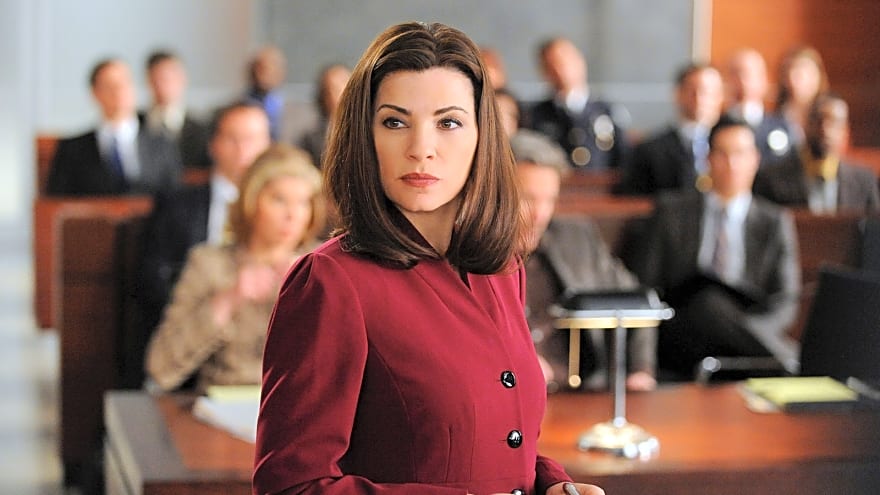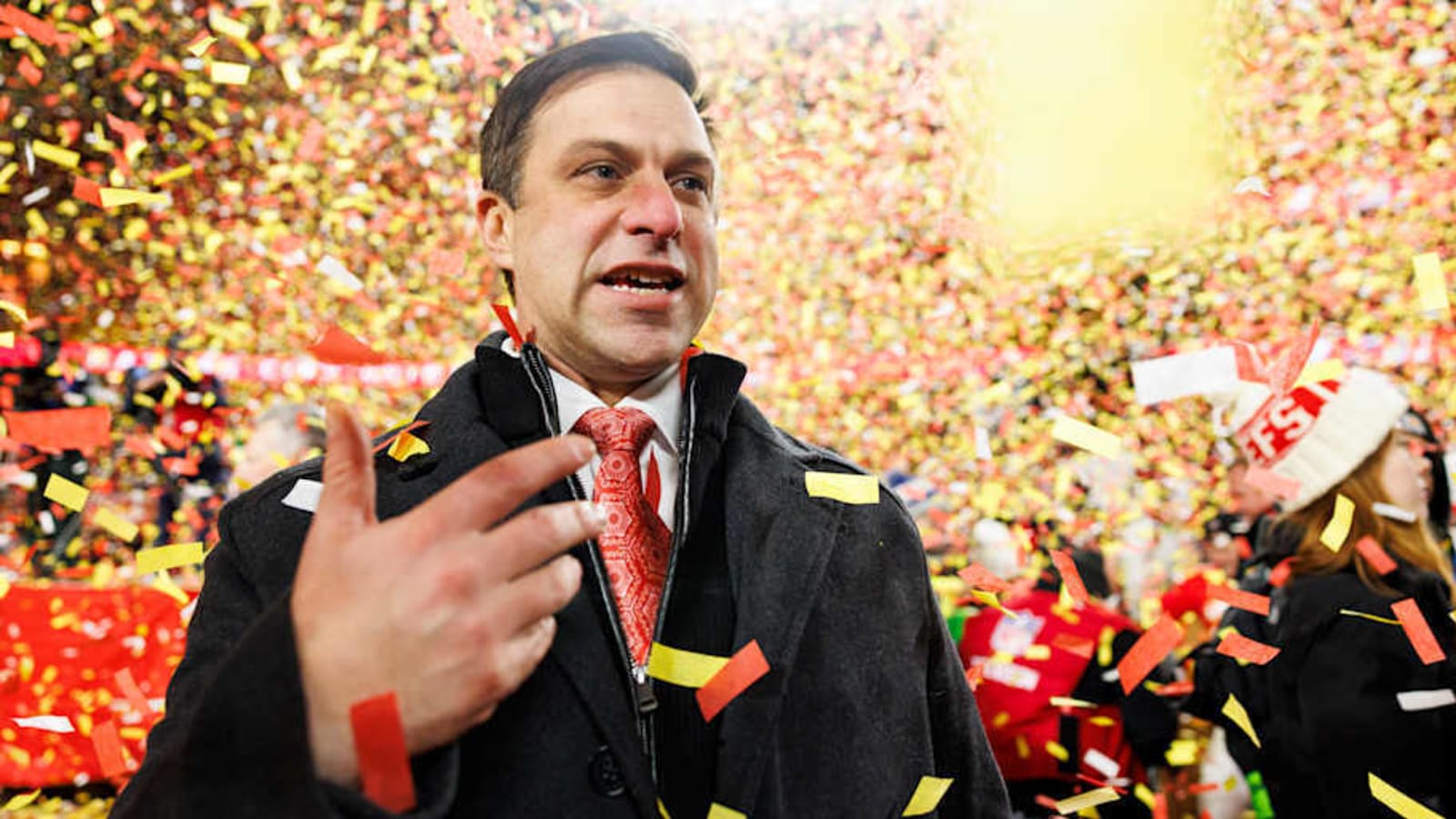
There's no sugarcoating it: Super Bowl LIX was a disasterclass for the Kansas City Chiefs. Patrick Mahomes was awful, Andy Reid was terrible, and the offensive line didn't show up. No NFL team has ever had a better shot at winning three straight Super Bowls, and KC squandered the opportunity.
While many Chiefs fans may need time away from football to recover, the reality is that the offseason has begun. Throughout the season, the team managed to overcome glaring flaws: inconsistent pass protection and pass rush, a stagnant running game, no downfield passing game, and questionable play-calling. In arguably the biggest game in franchise history, these weaknesses finally proved too much to overcome.
The Chiefs' path back to dominance requires making the most of these next three months. NFL teams have two main avenues for improvement: free agency and the draft. Both will be essential if the Chiefs hope to secure their fourth Super Bowl title in seven years.
The team faces numerous critical needs heading into the offseason. They must find a permanent solution at left tackle, strengthen both offensive and defensive lines, acquire an explosive running back, rebuild their downfield passing attack, and bolster their secondary depth. These needs are subject to change and are not the only areas that need to be addressed.
This is a tall order, and unless general manager Brett Veach pulls a straight flush, addressing every issue successfully seems unlikely.
Now that the offseason is upon us, let's review what the Chiefs are working with, some key dates, and what the Chiefs need to do to go back to the Super Bowl.
Looking at the Chiefs 2025 Cap Space
Cap Space (per Over The Cap): $11.5M (22nd in the NFL)
In the offseason, only the Top 51 highest cap hits count towards the salary cap. This is allows teams to sign up to 90 players and remain cap compliant.
Effective Cap Space (per Over The Cap): -$2.1M (24th in the NFL)
Effective Cap Space is the cap space a team will have after signing at least 51 players and its projected rookie class to its roster.
Dead Cap Space (per Over The Cap): $226K (31st in the NFL (low is good))
Key Dates for the Chiefs Offseason
Here are the most important dates that Chiefs fans should be aware of this offseason:
February 18 – March 4: Franchise / Transition Tag Window
February 24 – March 3: NFL Scouting Combine
March 10 – 12: Legal FA Tampering Period
March 12: Free Agency Begins / Start of New League Year
April 21: Offseason Workouts Can Begin
April 18: Restricted Free Agent Deadline
July 15: Franchise Tag Players Extension Deadline
Mid-July: Training Camp Begins
Key Free Agents for the Chiefs
Unrestricted Free Agents
Trey Smith (RG), DeAndre Hopkins (WR), Justin Reid (S), Charles Omenihu (S), Marquise "Hollywood" Brown (WR), Nick Bolton (LB), Carson Wentz (QB), Tershawn Wharton (DT), Derrick Nnadi (DT), Kareem Hunt (RB), Mike Pennel (DT), Samaje Perine (RB), Justin Watson (WR), JuJu Smith-Schuster (WR), Joshua Uche (EDGE), DJ Humphries (LT), Mecole Hardman (WR), James Winchester (LS)
Restricted Free Agents
Nazeeh Johnson (CB), Malik Herring (DL), Peyton Hendershot (TE), Jack Cochrane (LB), Keith Taylor (CB)
Exclusive Rights Free Agent
Mike Caliendo (iOL) and Matt Araiza (P)
Pre-Free Agency Moves for the Chiefs
Proposed Roster Cuts
WR Skyy Moore (WR, Saves $1.584M)
The Chiefs face a challenging salary cap situation with few obvious candidates for release. Other than Skyy Moore and potentially Joe Thuney, the cap savings from releasing most players wouldn't justify losing them. Travis Kelce's situation, however, is more complex.
Simple Contract Restructures
Note: A simple restructure converts payments into prorated signing bonuses within the confines of the remainder of the contract. Teams typically have the ability to unilaterally execute simple restructures without any action necessary from the player.
LB Drue Tranquill ($5M, Saves $2.5M)
RT Jawaan Taylor ($5.2M, Saves $2.6M)
C Creed Humphrey ($5.5M, Saves $4.125M)
DT Chris Jones ($16M, Saves $12M)
QB Patrick Mahomes ($19M, Saves $15.2M)
A contract restructure differs significantly from a pay cut. In most cases, restructuring simply redistributes cap dollars across different years; it's essentially the team borrowing cap space from its future self. When a team restructures a contract, they reduce their current season's cap hit, but those "saved" dollars are added to future years' caps. Think of it like paying off one credit card with another: the debt hasn't disappeared, it's just been moved around.
Contract Extensions
LG Joe Thuney: (3 years, $60M total, $20M guaranteed in new money, Saves $7M in cap space)
While Joe Thuney struggled in Super Bowl LIX, his overall performance warrants patience. He excelled in his natural left guard position before being moved to left tackle for the final third of the season. Though his upcoming $26.9M cap hit is substantial, releasing him would save $16M but significantly weaken an already shaky offensive line. A contract extension presents a better solution, offering immediate cap relief while retaining his valuable services.
Traditional Restructure
TE Travis Kelce: Convert the $12.75M in roster bonus and workout money into a signing bonus, plus adding 1 void year, Saving $6.4M in cap space.
This proposed move will likely be the most controversial of this mock offseason. Kelce, who turned 36 last October, has seen his performance shift from superstar level in recent years to fairly normal, an expected evolution given his age. His scheduled $19.8M cap hit for 2025 ranks second among tight ends behind only George Kittle, a figure that might be a little too much.
Cutting Kelce would save $17.25M, but that feels inappropriate given what he's done for the franchise and how he was historically underpaid throughout his career. What might make more sense is spreading out $12.75M in bonus money over two seasons. This would be done by adding a void year, which is not a method traditionally utilized by Brett Veach. If Kelce retires after next season, this move would create a $6.4M dead cap charge in 2026, but given what Kelce has done for this organization, that seems like a manageable price to pay.
While retirement remains a possibility that could render this discussion moot, we should operate under the assumption that he'll continue playing since he remains under contract. If he does retire, the Chiefs would save $17.25M in cap space.
Remaining 2025 Cap Space: $51.5M
Free Agency Moves for the Chiefs
ERFA Tenders
iOL Mike Caliendo ($1.03M)
P Matt Araiza ($960K)
RFA Re-Signings
LB Jack Cochrane (1 year, $1.1M)
DL Malik Herring (1 year, $1.1M)
CB Nazeeh Johnson (1 year, $1.1M)
TE Peyton Hendershot (1 year, $1.1M)
CB Keith Taylor (1 year, $1.1M)
Smaller UFA Re-Signings
LS James Winchester (1 year, $1.3M)
RB Kareem Hunt (1 year, $1.6M)
QB Carson Wentz (1 year, $3.5M)
WR Justin Watson (1 year, $2.5M)
DT Marlon Tuipulotu (1 year, $1.2M)
DT Derrick Nnadi (1 year, $1.3M)
DT Mike Pennel (1 year, $1.4M)
Key UFA Re-Signings
RG Trey Smith (4 years, $88M, $50M in guarantees, $8M 2025 cap hit)
WR Marquise "Hollywood" Brown (1 year, $5M)
LT D.J. Humphries (1 year, $5M)
Among the Chiefs' key pending unrestricted free agents, Trey Smith is the biggest priority. Following the offensive line's Super Bowl struggles, losing him would only make the unit much, much worse.
As for Hollywood Brown, who missed most of the season due to injury after signing last year's "prove it" deal, another short-term contract makes sense. However, the Chiefs would need to secure additional receiver depth as insurance against potential injury concerns.
After joining the Chiefs in November, due to recovering from an ACL tear sustained at the end of the 2023 season, D.J. Humphries didn't have much of an opportunity to prove himself this past season. Due to the very limited sample size, he likely won't command a high price tag to re-sign. Given his proven track record of productivity with the Cardinals, and the benefit of a completely healthy offseason, Humphries could provide valuable depth and serve as insurance if the team is unable to land a left tackle in the draft.
Nick Bolton presents a more complex decision. I made the tough decision to let him walk. While he was integral to Steve Spagnuolo's defensive scheme, his performance this season was his weakest in the NFL, and the off-ball linebacker position has diminished value in today's NFL. Drue Tranquill is under contract for two more seasons and Leo Chenal has also been solid throughout his short NFL career.
I also decided to let Justin Reid walk. Similar to Tyrann Mathieu, he plays out his original 3-year deal and walks as a free agent. Jaden Hicks was great in his rookie season, the Chiefs can find productive safeties for a lesser cost in free agency, and the team has been very good at drafting defensive backs in recent years.
While Charles Omenihu and Tershawn Wharton could return, circumstances complicate both situations. Omenihu's performance following his ACL injury was not ideal, and Wharton's potential price tag could very well price himself out Kansas City.
UFA Signings (Outside the organization)
CB Jonathan Jones (1 year, $3.5M)
S Andre Cisco (3 years, $27M, $16M in guarantees, $5.5M 2025 cap hit)
DT Poona Ford (2 years, $9M, $4M in guarantees, $2.75M 2025 cap hit)
DT Levi Onwuzurike (3 years, $27M, $13M in guarantees, $5M 2025 cap hit)
EDGE DeMarcus Lawrence (2 years, $15M, $8M in guarantees, $4.75M 2025 cap hit)
LB Willie Gay (1 year, $3M)
WR Demarcus Robinson (1 year, $4M)
After locking down Trey Smith, who many NFL analysts view as one of the best free agents of the offseason, the Chiefs likely won't pursue a major free agent signing, but never say never.
The experienced Jonathan Jones, despite being undersized, has proven himself capable as an outside cornerback. Former nemesis Andre Cisco could effectively step in as Justin Reid's replacement. On the defensive line, both Ford and Onwuzurike, who excelled in 2024, offer valuable depth against both run and pass at potentially bargain rates.
DeMarcus Lawrence would be the high-risk, high-reward potential signing of this offseason. While he'll turn 33 in April and is recovering from a Lisfranc foot injury, he's proven himself as an elite three-down edge defender throughout his career. If the Chiefs could get the 2023 version of Lawrence, it would be a masterful move by Brett Veach. As Super Bowl LIX proved, having an elite defensive line is a priceless advantage.
If the Chiefs decide to let Nick Bolton walk in free agency, old friend Willie Gay could serve as an affordable replacement in the short-term. After a disappointing one-year stint with New Orleans, his market value should be relatively low, making him a potential bargain signing.
Despite Xavier Worthy's impressive postseason performance, the Chiefs still require additional depth at wide receiver. With Rashee Rice recovering from a major injury (plus looming suspension) and Hollywood Brown's recent durability issues, bringing back Demarcus Robinson makes sense as a depth signing. While he wouldn't be expected to produce at a high level, Robinson could provide reliable depth production and occasional deep-threat ability for the offense.
Remaining 2025 cap space: $7.119M
2025 NFL Draft
I used the PFF Mock Draft Simulator to perform this mock draft. No trades
Round 1, Pick 31: Josh Conerly Jr., OT, Oregon
The Chiefs secure their left tackle of the future in Josh Conerly Jr. Given Kansas City's preference for tackles with arms measuring 34 inches or longer, Conerly should meet this threshold. Though still relatively new at the position, he showcased strong pass protection skills in 2024 and possesses excellent athleticism and footwork. While he needs to add strength, his rawness also suggests significant room for growth, making him a solid value at pick 31. Realistically, the Chiefs may need to trade up to acquire him, but securing their future left tackle this offseason is crucial.
Round 2, Pick 63: TreVeyon Henderson, RB, Ohio State
The Chiefs' ground game faced challenges in 2024, largely due to Isiah Pacheco's two-month absence with an ankle injury and his diminished effectiveness once he returned from injured reserve. TreVeyon Henderson could provide the explosive element to complement Pacheco and Hunt. While his durability may not support a three-down role, he possesses the game-breaking skillset that the Chiefs haven't had since Jamaal Charles.
Round 3, Pick 66: Chris Paul Jr., LB, Ole Miss
While the offense requires significant attention this offseason, the defense also has areas to address. Assuming the rest of this mock offseason plays out, the Chiefs would have just one linebacker (Drue Tranquill) under contract for 2026, with both Willie Gay and Leo Chenal set to hit free agency next offseason. Though slightly undersized, Paul demonstrates strong ability against both the run and pass while offering impressive athleticism.
Round 3, Pick 95: Harold Fannin Jr., TE, Bowling Green
Harold Fannin Jr. is one of the most unique prospects in this draft class. He stands out as one of the premier pass-catching tight ends available. His excellent route running, reliable hands, and impressive yards-after-catch ability helped him lead all FBS pass-catchers in both receptions and receiving yards at Bowling Green in 2024, a remarkable feat for a tight end.
While he's a versatile player who lined up inline, in the slot, out wide, and even in the backfield, Fannin's smaller frame for a tight end raises questions about how his solid college run-blocking will translate to the NFL. Though not particularly explosive in terms of change of direction, his skillset seems tailor-made to be a gadget player for Andy Reid.
Round 4, Pick 131: R.J. Oben, EDGE, Notre Dame
The Chiefs need to keep bolstering the trenches. Despite not being the most explosive prospect, R.J. Oben brings valuable traits to the NFL: a relentless motor, natural bend, football IQ, and impressive length. While he may not be a Day 1 or 2 pick, he could provide solid value in the fourth round.
Round 7, Pick 227: Fentrell Cypress II, CB, Florida State
Given their track record of developing cornerbacks, the Chiefs could take a chance on Fentrell Cypress II. Though he finished his career at Florida State, he made his mark at Virginia in 2022, where he showcased his versatility by thriving in both man and zone coverage .
Final Roster (heading into the preseason)
Note: NFL teams are permitted to have up to 90 players on the roster during the offseason. This roster projection is incomplete as the remaining slots will be filled by mostly rookie undrafted free agents and other depth signings.
Denotes a free agent signing
Denotes a draft pick
Quarterback (3): Patrick Mahomes, Carson Wentz, Chris Oladokun
Running Back (4): Isiah Pacheco, TreVeyon Henderson, Kareem Hunt, Carson Steele
Wide Receiver (9): Xavier Worthy, Rashee Rice, Marquise Brown, Demarcus Robinson, Nikko Remigio, Justin Watson, Jason Brownlee, Justyn Ross, Tyquan Thornton
Tight End (6): Travis Kelce, Noah Gray, Jared Wiley, Harold Fannin Jr., Peyton Hendershot, Baylor Cupp
Offensive Tackle (7): Jawaan Taylor, D.J. Humphries, Josh Conerly Jr., Wanya Morris, Kingsley Suamataia, Ethan Driskell, Chukwuebuka Godrick
Interior Offensive Line (7): Creed Humphrey, Joe Thuney, Trey Smith, Mike Caliendo, C.J. Hanson, McKade Mettauer, Hunter Nourzad
Defensive Tackle (8): Chris Jones, Poona Ford, Levi Onwuzurike, Derrick Nnadi, Mike Pennel, Marlon Tuipulotu, Siaki Ika, Fabien Lovett
Defensive End (7): George Karlaftis, Mike Danna, DeMarcus Lawrence, Felix Anudike-Uzomah, R.J. Oben, B.J. Thompson, Malik Herring
Linebacker (7): Drue Tranquill, Leo Chenal, Willie Gay, Chris Paul Jr., Cam Jones, Shaun Bradley, Jack Cochrane
Cornerback (9): Trent McDuffie, Jaylen Watson, Joshua Williams, Christian Roland-Wallace, Nazeeh Johnson, Fentrell Cypress II, Keith Taylor, Darius Rush, Eric Scott
Safety (6): Jaden Hicks, Andre Cisco, Bryan Cook, Chamarri Conner, Jason Taylor II, Deon Bush
Special Teams (3): Harrison Butker, Matt Araiza, James Winchester
Remaining 2025 cap space: $7.4M
Conclusion
Based on projected contracts and the rookie class, the Chiefs would have roughly $7M in remaining cap space - sufficient to add a free agent or two during the late summer months.
While many of these specific moves won't happen (there's a reason I'm not in the front office), this exercise illustrates potential paths for the team's improvement. The outlined approach would strengthen both lines of scrimmage, inject youth at skill positions, and add explosive playmaking ability to the offense.
However, roster changes alone won't guarantee another Super Bowl run. The Chiefs must reassess their offensive philosophy after ranking among the NFL's least explosive units. Patrick Mahomes posted the third-lowest average depth of target and deep throw rate in the league, surpassing only Tua Tagovailoa and Gardner Minshew ($). This conservative approach, while partly influenced by injuries to Rashee Rice and Hollywood Brown plus left tackle instability, is unacceptable. Other teams with weaker offensive lines still managed many more explosive plays, and the Chiefs' lack of quick-strike ability made it harder to blow out opponents.
While Brett Veach has forgotten more about football than I ever hope to learn, this analysis serves to preview the offseason landscape, evaluate current assets, and explore potential improvements as the Chiefs pursue another championship. Their success will depend not just on personnel moves, but on recapturing their explosive offensive identity from years past.
More must-reads:
- Sean Payton's take about Broncos' Super Bowl chances should raise eyebrows
- Browns reporter says rookie is 'not an NFL QB'
- The 'NFL mascot names' quiz
Breaking News
Trending News
Customize Your Newsletter
 +
+
Get the latest news and rumors, customized to your favorite sports and teams. Emailed daily. Always free!
TODAY'S BEST

Justin Fields Called 'Biggest Loser' In Jets Training Camp
The New York Jets opted to cut Aaron Rodgers and sign Justin Fields to replace him during the offseason. This kind of commitment to Fields should bolster his confidence, but it could also place a lot of pressure on his shoulders. To this point, Fields has looked solid in training camp, aside from a scary toe injury that was quickly resolved in July. Justin Fried of the Jet Press recently reported that Fields' training camp may have reached a new low over the weekend as the young signal caller struggled. "Justin Fields put together his best practice of the summer to this point on Friday, completing his first 12 passes en route to an excellent all-around performance. The same can't be said about his showing on Saturday, however," Fried wrote. "Fields finished the day an abysmal 2-of-10 in the air, including a drop from rookie tight end Mason Taylor. "Some of his incompletions were catchable balls, but the Jets' passing game struggles on Saturday can largely be blamed on No. 7. Fields did flash his running ability with a 25-yard rushing score on the first play of red-zone drills, but the Jets would like to see more consistency in the air from the starting quarterback. Saturday's scrimmage was far from his best showing of the summer." Fields is a runner first at the NFL level, but his arm is nothing to scoff at. For most of training camp, his arm talent has been better than advertised, but during Saturday's scrimmage, it just wasn't there. A 2 for 10 performance is unacceptable for a $40 million quarterback who was signed to take over the team. The running game should open up the passing game for the Jets, which is going to need to be the case if Fields is going to struggle like this. However, it's just one day of camp. It's nothing to be too concerned about. Just because Fields lost this specific practice doesn't mean he's heading in the wrong direction as a whole.

Tiger Woods Sends Strong Message to Retiring CBS Broadcaster on Sunday
At Sedgefield Country Club in Greensboro, North Carolina, Sunday’s final round of the 2025 Wyndham Championship closed out the PGA Tour’s regular season. It also marked the end of an era for one of golf’s most revered broadcasters. For the last time, Ian Baker-Finch manned the hole-announcing microphone for CBS Sports, capping 30 years in the booth following a playing career that peaked with his victory at the 1991 Open Championship. Before the day was over, Tiger Woods took to X to salute "Finchy." "Congrats Finchy for 30 incredible years behind the microphone. You brought insight into things that the viewing audience could understand and relate to. From all of us—thanks for the memories." The message joined tributes from Jack Nicklaus, Jason Day, Adam Scott and others, underscoring Baker-Finch’s standing among champions past and present. Ian Baker-Finch: From Major Champion to Broadcast Mainstay Baker-Finch turned pro in 1979, winning 17 professional tournaments worldwide. His lone major title came at Royal Birkdale in 1991, where he secured the Open Championship by five strokes. After retiring in the mid-1990s, Baker-Finch transitioned smoothly into broadcasting. He cut his teeth as an analyst on Australian television before joining ESPN and ABC in 1998. In 2007, he became CBS Sports’ dedicated hole announcer, a role he held through 2025, calling golf’s defining moments with a blend of technical acumen and warm delivery. Over 19 seasons with CBS, he covered five Masters and contributed to countless PGA Tour telecasts. Throughout Woods’ five green-jacket haul (1997, 2001, 2002, 2005, 2019), Baker-Finch was a trusted on-course voice that helped demystify championship golf for television audiences. As a player, Baker-Finch remains one of only seven Australian men to win a major championship and is one of a select few to dominate links golf on British soil. As a broadcaster, Baker-Finch’s voice guided generations of fans through golf’s signature moments, shaping how millions understand the game’s subtleties. When the G.O.A.T. of professional golf uses his platform to honor your contribution to the sport, it signals a broadcast career worth remembering.

Toronto Marlies sign Alex Nylander to 1-year contract
The Toronto Marlies signed three forwards to one-year contracts on Monday, including Alex Nylander. Nylander joined the Maple Leafs organization ahead of the 2024-25 season, recording 23 goals and 44 points in 64 games with the Marlies. The 27-year-old also played five games with the Maple Leafs, where he did not register a point. Nylander previously recorded 11 goals and 15 points in 23 games with the Columbus Blue Jackets during the 2023-24 campaign. He will be afforded a chance to make the Leafs’ roster out of training camp, but it will be an uphill battle given the team’s improved depth across their forward corps. Alex Nylander made his Leafs debut with his brother, William, during a November game against the Utah Hockey Club, where the entire team couldn’t help but be thrilled for the duo. “I think it’s great for sure,” Maple Leafs head coach Craig Berube said of the Nylander brothers playing together in November. “You know, anytime you can play with your brother and play some shifts with your brother and be on the ice with him, that’s a special thing. Very happy with both of them and their dad, who was a player in the league for a long time.” Toronto also signed Brandon Baddock and Luke Grainger to one-year deals. Baddock joined the Marlies midway through the 2024-25 season, spending the past two seasons with the AHL’s Rockford IceHogs. He recorded one goal in seven games with the Marlies, after registering three goals and seven points in 38 games with the IceHogs. Baddock has played in one NHL game, with the Montreal Canadiens during the 2021-22 season. Grainger recorded nine goals and 21 points in 36 games with the ECHL’s Wichita Thunder. It’s been a busy offseason for the Marlies, who previously signed five players to one-year deals on July 8, with Marko Sikic as the headliner of the group. Cedric Pare and Sam Stevens are also coming back on one-year contracts. Toronto begins its regular season against the Rochester Americans in a home-and-home through October 10-11.

Reporter predicts how Commanders will handle Terry McLaurin trade request
The Washington Commanders are dealing with some unwanted drama as they look to build on last season's trip to the NFC Championship Game after star wide receiver Terry McLaurin requested a trade. ESPN's Bill Barnwell said that he felt the "most likely scenario" regarding the trade request is that the Commanders will have McLaurin in the lineup for their Week 1 game against the New York Giants on Sept. 7. On Monday morning, Commanders reporter Nicki Jhabvala of The Athletic predicted that "the Commanders will keep McLaurin" despite the drama. "They can’t take away their star quarterback’s go-to receiver in a year when they’ve clearly gone all in to try to compete with the Eagles," Jhabvala wrote. "They don’t have much depth at receiver; Deebo Samuel isn’t a true No. 2 in workload, let alone a No. 1, and the only other proven receiver on the roster is Noah Brown, who is quite good but has a lengthy injury history." McLaurin emerged as the favorite target for quarterback Jayden Daniels as Daniels became the reigning Offensive Rookie of the Year amid the run to the NFC title game, where Washington fell to the eventual Super Bowl champion Eagles. According to ESPN stats, McLaurin ended the 2024 regular season with team highs of 117 targets, 82 receptions and 1,096 receiving yards. He was also second in the entire NFL with 13 touchdown catches. It remains to be seen if McLaurin will accept less money than DK Metcalf, who received a five-year, $150M deal after the Pittsburgh Steelers traded for him in March. Metcalf will turn 28 years old in December. "The Commanders also know they have much more leverage than McLaurin in his contract dispute," Jhabvala added. "He’ll be 30 in September, which means he’ll be 31 in the first season of an extension. It also means that holding out regular-season games could be career-ending. So, a deal will get done. There’s still time." As of Monday morning, DraftKings Sportsbook listed Washington sixth among the betting favorites at +1800 odds to win Super Bowl LX. The fact that those odds haven't shifted would seem to indicate that insiders believe the Commanders will make McLaurin happy before they face the Giants on the opening Sunday of September.




